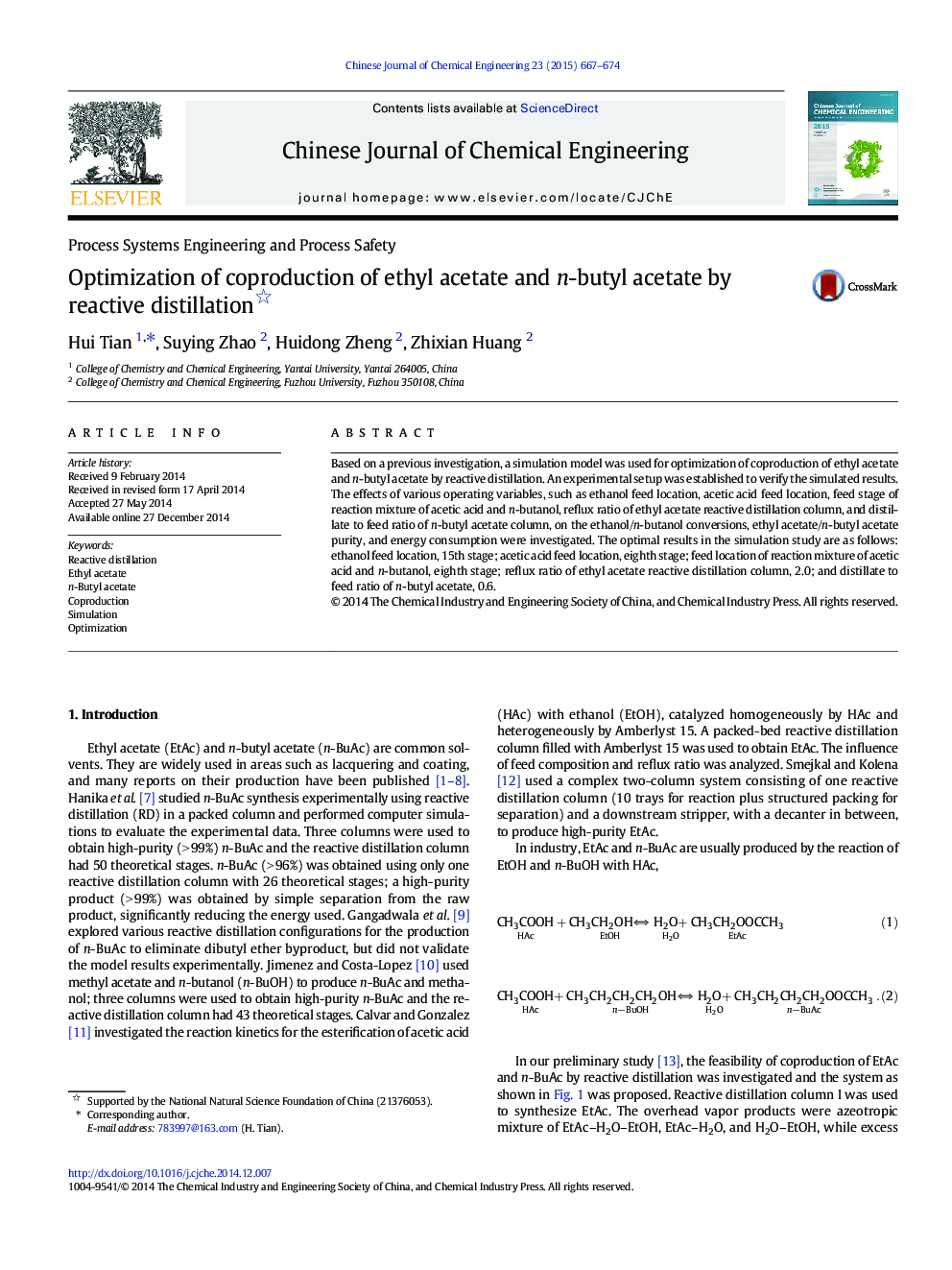| کد مقاله | کد نشریه | سال انتشار | مقاله انگلیسی | نسخه تمام متن |
|---|---|---|---|---|
| 168094 | 1423401 | 2015 | 8 صفحه PDF | دانلود رایگان |

Based on a previous investigation, a simulation model was used for optimization of coproduction of ethyl acetate and n-butyl acetate by reactive distillation. An experimental setup was established to verify the simulated results. The effects of various operating variables, such as ethanol feed location, acetic acid feed location, feed stage of reaction mixture of acetic acid and n-butanol, reflux ratio of ethyl acetate reactive distillation column, and distillate to feed ratio of n-butyl acetate column, on the ethanol/n-butanol conversions, ethyl acetate/n-butyl acetate purity, and energy consumption were investigated. The optimal results in the simulation study are as follows: ethanol feed location, 15th stage; acetic acid feed location, eighth stage; feed location of reaction mixture of acetic acid and n-butanol, eighth stage; reflux ratio of ethyl acetate reactive distillation column, 2.0; and distillate to feed ratio of n-butyl acetate, 0.6.
Graphical AbstractA simulation model was used for optimization of coproduction of ethyl acetate and n-butyl acetate by reactive distillation. An experimental setup was established to verify the simulated results. The effects of various operating variables, such as ethanol feed location, acetic acid feed location, feed stage of reaction mixture of acetic acid and n-butanol, reflux ratio of ethyl acetate reactive distillation column, and distillate to feed ratio of n-butyl acetate column, on the ethanol/n-butanol conversions, ethyl acetate/n-butyl acetate purity, and energy consumption were investigated.Figure optionsDownload as PowerPoint slide
Journal: Chinese Journal of Chemical Engineering - Volume 23, Issue 4, April 2015, Pages 667–674